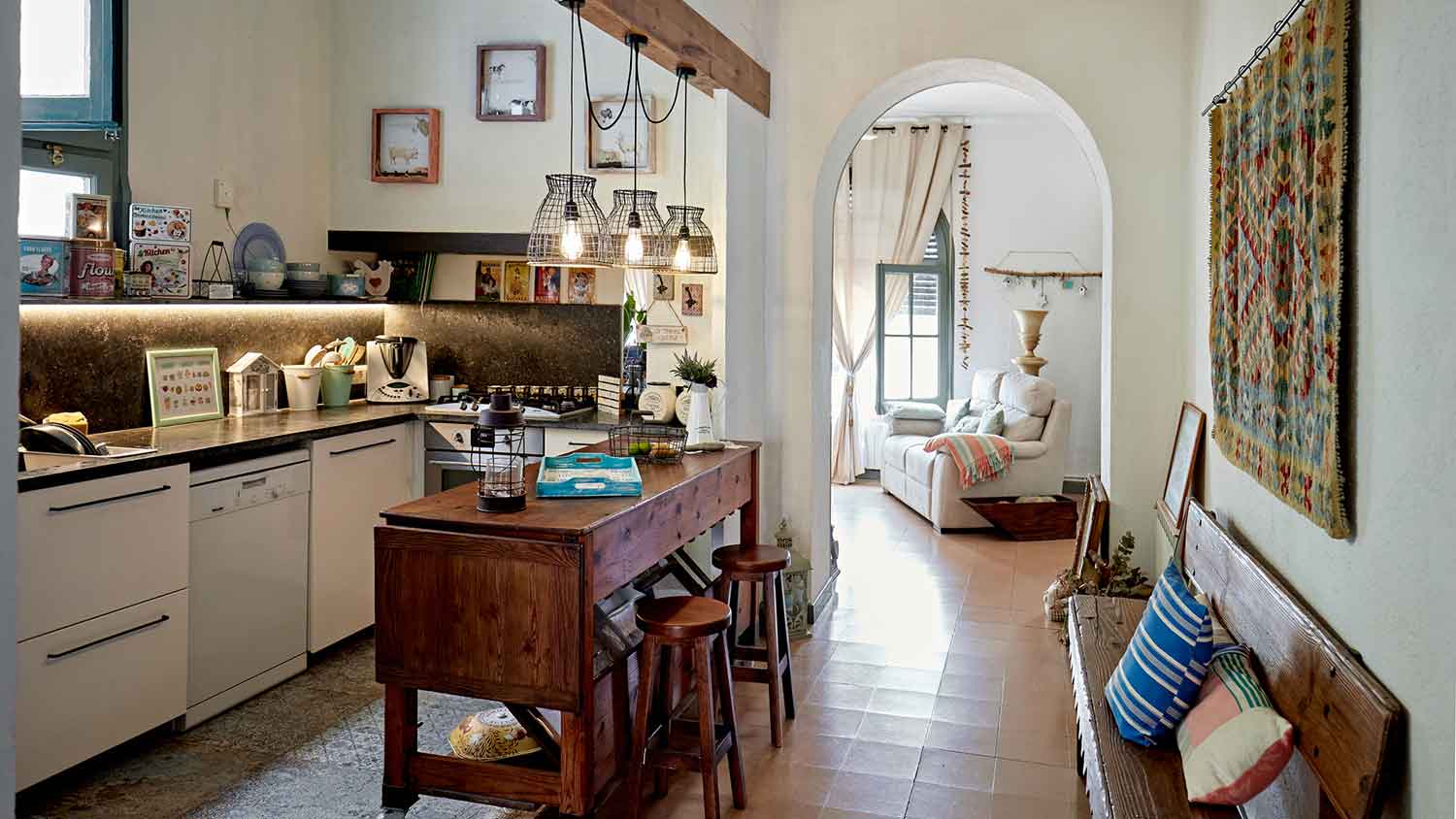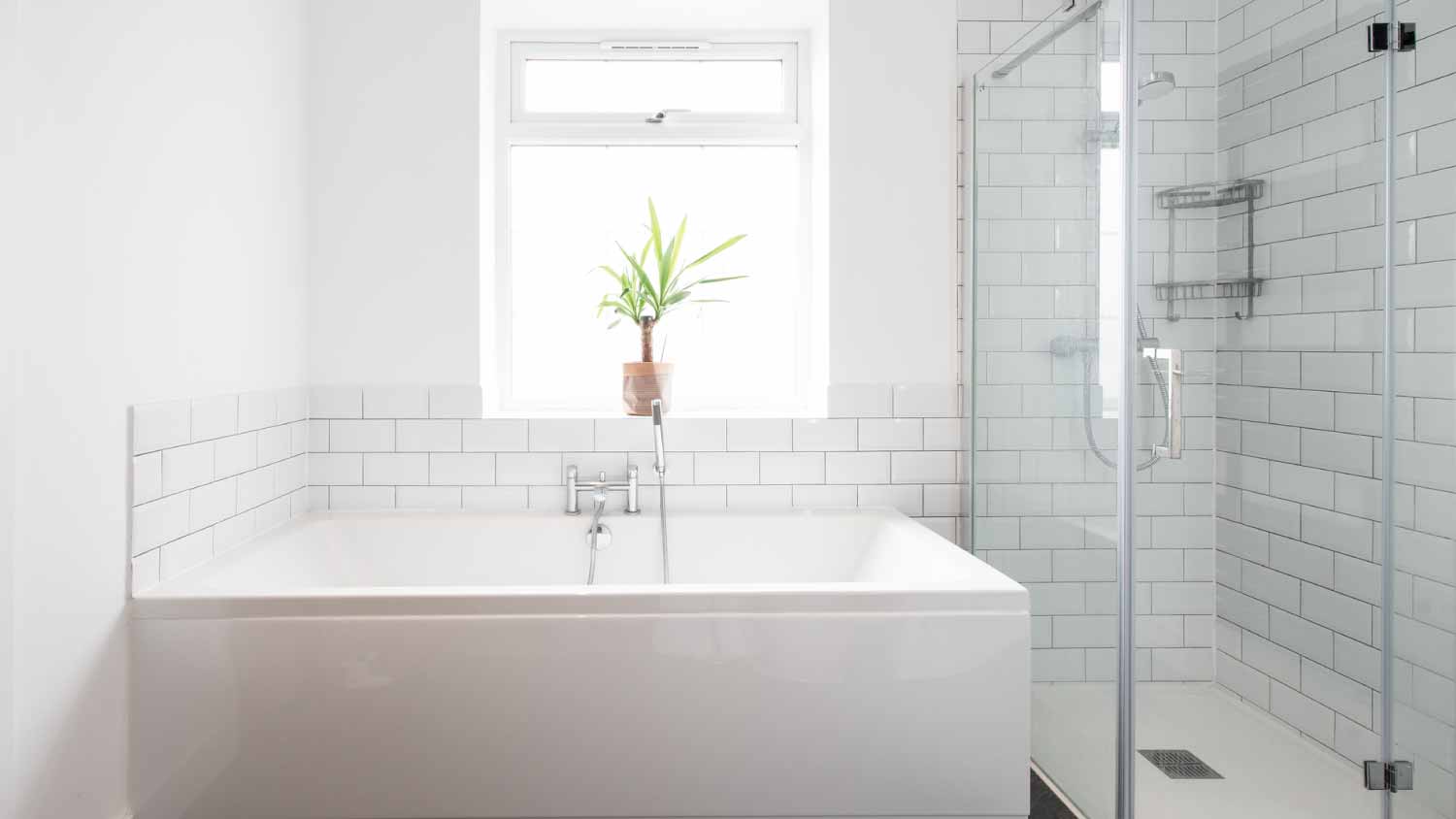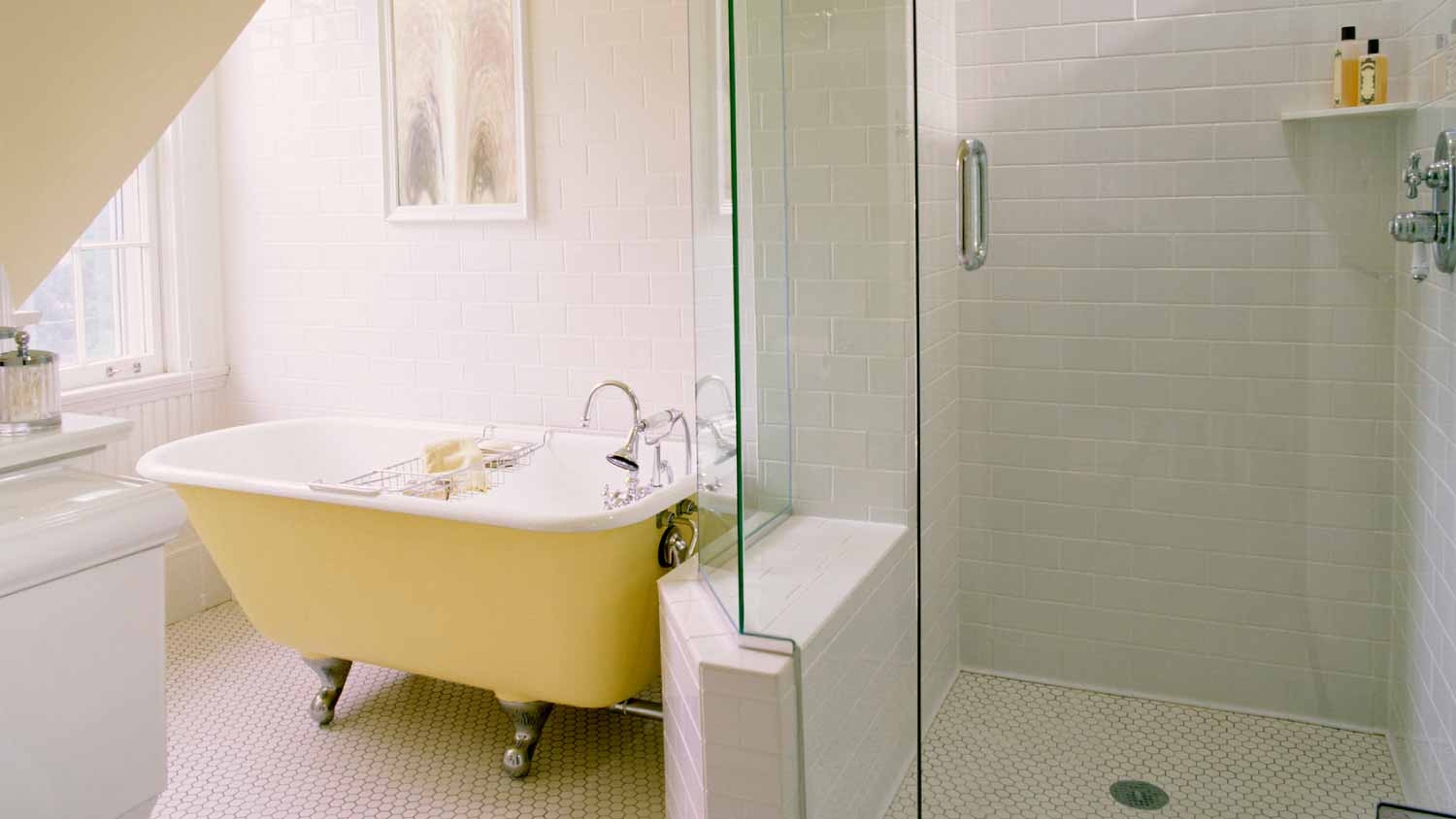
Shower installation costs depend on size, style, and materials. No matter the budget, this guide can help you plan your project and even save a few bucks.
Make a statement with your freestanding kitchen island


Building materials and counter type will affect cost
The average island costs $3,000–$5,000
Multi-functional
Fully customizable
When in doubt, hire a pro to install your island
What sounds better than gathering around your chic freestanding kitchen island with friends sipping cocktails and grazing a charcuterie board? You can use your freestanding kitchen island as a socializing hot spot, a second table, the ultimate prepping station, and more. Depending on your needs, an island could be a promising addition to your kitchen.
A freestanding island, you guessed it, is a stand-alone piece in your kitchen. This kind of island makes a statement, and it almost always serves as a gathering place while entertaining.
A freestanding island can be prefabricated or custom-built with storage shelves, a sink, a wine fridge, and whatever else you can dream up. However, freestanding kitchen islands are more expensive than other types of islands, so you’ll need to factor that into your budget.

There are many brag-worthy perks of a freestanding kitchen island. Not only are kitchen islands visually pleasing, but they’re also super functional.
Islands are perfect for those who have a smaller kitchen. If you have a reasonably small kitchen that lacks counter space, then a freestanding island is an ideal way to add counter space to your pre-existing layout.
Another great perk to adding an island is that you can ditch the traditional dining table and instead use the countertop as a kitchen island table perfectly equipped for a quick meal. Just pull up some stools for an eat-in area, and use it as counter space too.
Of course, arguably the most significant bonus to a freestanding island is the options it creates for entertaining. If you love entertaining, you know just how essential it is to have a space for mouthwatering appetizers and drinks.
A freestanding island is the answer to all of your entertainment wishes, as it lets you have a beautiful open space to place foods, gather around for a glass of wine, and chat with your guests as you prep around the kitchen.
You’re finally getting to remodel your kitchen with a freestanding island you’ll love, so why not customize it to your wants and needs?
You can choose details like drawer size, storage cubbies, and hardware. You can even install a wine fridge under your island for maximum fun and enjoyment.
While the construction and features are a big part of kitchen island design, so is the physical look. Be enthusiastic about picking a color for your island. Choose an on-trend color for your kitchen island, like dove gray or pure white. Or, you can go with a bold color, like royal blue or sage green, if you want to make a statement.
Rather have your current cabinets match your island? Simply color-match the cabinetry, so it’s the same throughout your kitchen.

The countertop is one of the most expensive parts of building a freestanding island. On average, counters cost $20 to $125 per square foot. The good news is you can consider how much it costs to install countertops before choosing which is best for you.
Since quartz is durable, attractive, and engineered for consistent patterns it’s become a design favorite. Overall, it makes a stunning choice for an island. Costs range from $15 to $70 per square foot, and it doesn’t require nearly as much maintenance as other counters.
Granite is a natural stone. The pros are its variety of colors, patterns, and textures, as well as its durability. Granite has a wide cost range of $15 to $40 per square foot. Note that granite only needs sealing maintenance every few years.
This rustic wooden countertop is one of the more affordable options at $18 to $38 per square foot. While it’s visually warm and appealing, wooden counters need proper sealing and maintenance more often than other counters.
Concrete can be completed with different finishes and glazes to get the hue and texture you want. These counters run from $50 to $100 per square foot. Concrete counters also require sealing maintenance.
The most affordable option for your island is laminate. It costs $8 to $27 per square foot. However, this affordability comes at the cost of durability. Laminate can scratch and chip much easier than the other countertop types, and it’s not heat-resistant.
Kitchen islands have numerous factors that affect the costs. An estimate for kitchen island costs is anywhere from $3,000 to $5,000. More specifically, a freestanding island with customized features can cost $3,000 to $10,000.
On the other hand, prefabricated islands that can be assembled as freestanding pieces have a lower price range of $100 to $2,000. But, these prefab options will require some complex assembly.
While custom and prefab options will alter the costs, so will the features you’re adding to your island. The more you add to your island, the more likely it’ll be that you will need professional installation, from hiring a general contractor to a plumber in your area.
Cabinetry: $500–$1,200 per linear foot
Electrical work: $50–$100 per hour
Contractor fees: $300–$400 per day
Plumbing: $45–$100 per hour
While freestanding islands are a top-of-the-line choice for their versatility, there are other alternatives that you can choose from that will enhance the look and function of your kitchen.
A moveable cart is a small kitchen’s best friend. With a moveable island cart, you’ll spend less money than any of the other island choices that require some sort of major remodel. Typically, a cart island has a countertop that has enough space so you can prepare and serve guests, but it’s likely your cart island won’t have any fancy gadgets attached.
So if you live in an apartment or condo and you don’t want to shovel money into remodeling, then a moveable island cart is a valuable and fun alternative to spice up your kitchen.
Another kitchen island-style variety is an attached bar. Some kitchens lend themselves to creating a bar-style countertop that hangs over the ledge. For example, an L-shaped kitchen can accommodate a countertop that allows you to pull up seats and enjoy meals. Technically speaking, this type isn’t freestanding, as it’s attached to the current layout.
From average costs to expert advice, get all the answers you need to get your job done.

Shower installation costs depend on size, style, and materials. No matter the budget, this guide can help you plan your project and even save a few bucks.

Finishing an attic can make a great addition to your home. This guide breaks down the cost to finish an attic, including labor, materials, and more.

Whether you’re looking to hire a pro or DIY, the cost of a kitchen design can add up quickly. Learn the cost factors involved in designing your kitchen.

An updated bathtub can give a bathroom a whole new look. Find out how much it costs to replace a bathtub in Austin, TX, including prices by type and labor costs.

An updated bathtub can give a bathroom a whole new look. Find out how much it costs to replace a bathtub in Indianapolis, IN, including prices by type and labor costs.

Adding kitchen cabinets to your ceiling is a budget-friendly way to increase your storage space and make your kitchen look more attractive.